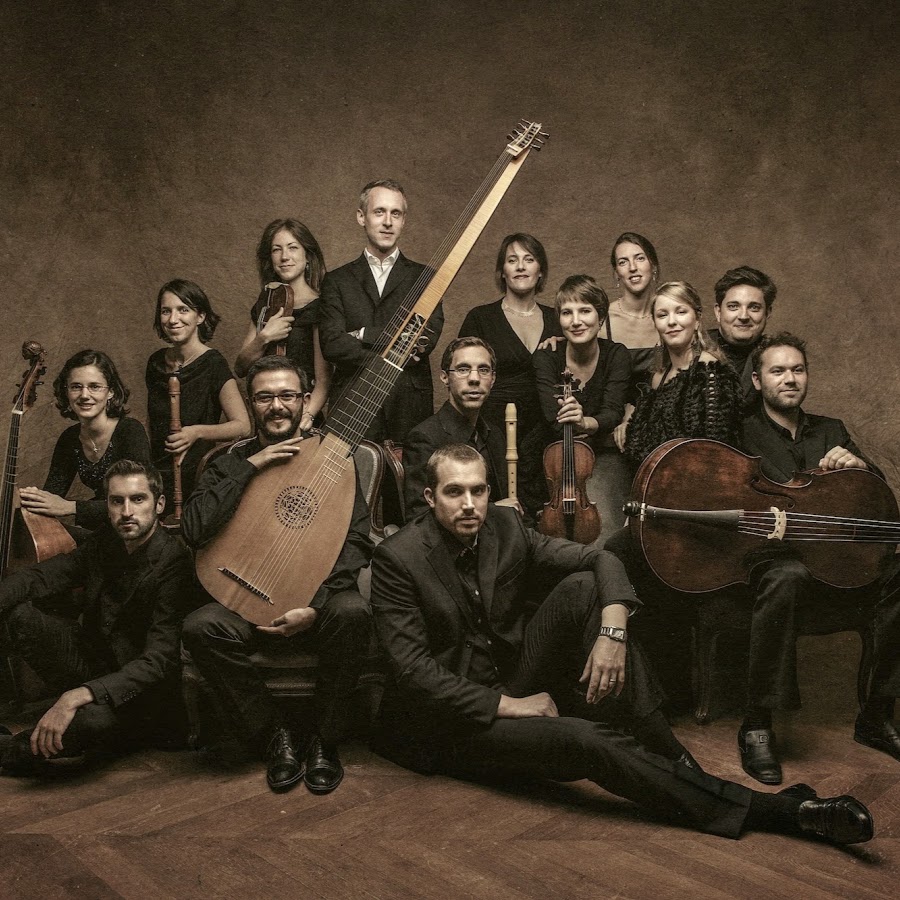Ensemble Correspondances brings the Louvre’s musical pleasures to life

Ensemble Correspondances performed from the Louvre in a streamed concert presented by the Library of Congress
The joys of the free concert series at the Library of Congress include periodic visits by some of Europe’s leading early music ensembles. The pandemic scuttled this season’s opportunity to hear the extraordinary Ensemble Correspondances in its program dedicated to music performed in the Louvre. Audiences did have the chance to hear the program as recorded in the Auditorium du Louvre last year, streamed for the first time on Friday.
Conductor and keyboard player Sébastien Daucé founded this group in 2009 with fellow students at the Conservatoire National Supérieur de Musique de Lyon. They have released a series of excellent recordings of often neglected French music from the 17th century and perform concerts and staged productions at Versailles and many venues and festivals in France.
This concert draws largely upon the ensemble’s 2020 recording Les Plaisirs du Louvre (Harmonia Mundi), a selection of airs de cour and instrumental pieces performed by La Chambre du Roi, a small ensemble of elite musicians who played at the pleasure of the French king. The music spans the reign of Louis XIII and the early years of Louis XIV. Daucé gave a brief introduction, speaking in front of portraits of Louis XIII and Richelieu in the Louvre.
Daucé led an ensemble intended to approximate the size of La Chambre du Roi, a consort of five viol players, one recorder player, and two theorbists. He himself sometimes conducted and sometimes played, alternating between a harpsichord and small organ stacked on top of one another. The group produced an utterly refined and blended sound, heard by themselves in instrumental pieces by François de Chancy and Jacques Champion de Chambonnières, among others.
The nine singers, heard in various combinations, were a beautifully balanced choral ensemble composed of attractive solo voices. Recorded in rich and intimate sound, their voices rendered this delectable text and music with the outstanding subtlety and delicacy offered to royal ears in the private rooms of the Louvre. (Scholarly program notes by Thomas Leconte, a specialist at the Centre de musique baroque de Versailles, detailed the range of spaces in the Louvre where this music was performed.)
Daucé centered the program on the music of Antoine Boësset, a composer known in his time as “Apollon de la France.” Long forgotten until modern musicological excavations, he was the second important figure in the history of the air de cour after his father-in-law Pierre Guédron, also featured in this concert. Works of secondary composers rounded out a program full of rarities.
Boësset composed some of these pieces for court ballets, extravagant performances danced by the king, the queen, and their courtiers, often accompanied by professional dancers. The style of French courtly dance gave rise to the classical ballet, later separated from its aristocratic surroundings. The combination of dances and sung pieces, forming together a dramatic arc, was an important precursor of French opera.
Two Boësset airs from the Ballet des Nymphes bocagères de la forêt sacrée, danced by the Queen in the Louvre in 1627, were particularly charming. Four male singers sang in antiphonal dialogue with four women in the “Dialogue d’Orphée.” The striking low range of mezzo-soprano Lucile Richardot stood out in “Bien loin profanes de ces lieux.”
Richardot and countertenor David Tricou took the top parts in Étienne Moulinié’s “Rompez les charmes du sommeil,” a jaunty piece from the Ballet du Mariage de Pierre de Provence et de la belle Maguelonne, danced by the brother of Louis XIII. Even more gorgeous was “Il sort de nos corps emplumés,” a rapturous slow air from the 1625 Ballet du Monde renversé, with all nine singers as gods in avian form singing to the beauties of the court.
Louis XIII himself composed the simple, brief air “Les Gascons” for the Ballet de la Merlaison, in which he danced. Other especially entertaining instrumental selections included pieces by Louis Constantin from the Ballet des Triomphes, danced by Louis XIII at the Louvre in 1635. While recorder player Lucile Perret mostly doubled a viol part on many pieces, she had a smart and crisp turn on sopranino recorder in the “Air de Mr. de Liancourt.”
Other airs were not from court ballets, made instead for smaller royal divertissements of various kinds. Sopranos Caroline Bardot and Caroline Weynants joined Richardot for the languorous trio by Moulinié, “O doux Sommeil que tes songes aimables.” Such selections included a few refittings of court arias with sacred texts, a common practice in the period, such as “Quels tourments rigoureux,” in which Guédron’s amorous sighs become the laments of souls paying for such sins in Purgatory.
The Latin motet Flores Apparuerunt, featuring all the performers, served as a brilliant lagniappe at the concert’s conclusion. The amorous but Biblical text from Song of Songs fit in perfectly with these courtly works of the same period. The exclamation of the final phrase (“Quia amore langueo”), set by the composer to aching suspensions and resolved dissonances, in this context felt both earthly and spiritual.
This concert can be streamed, along with several other virtual performances. loc.gov
